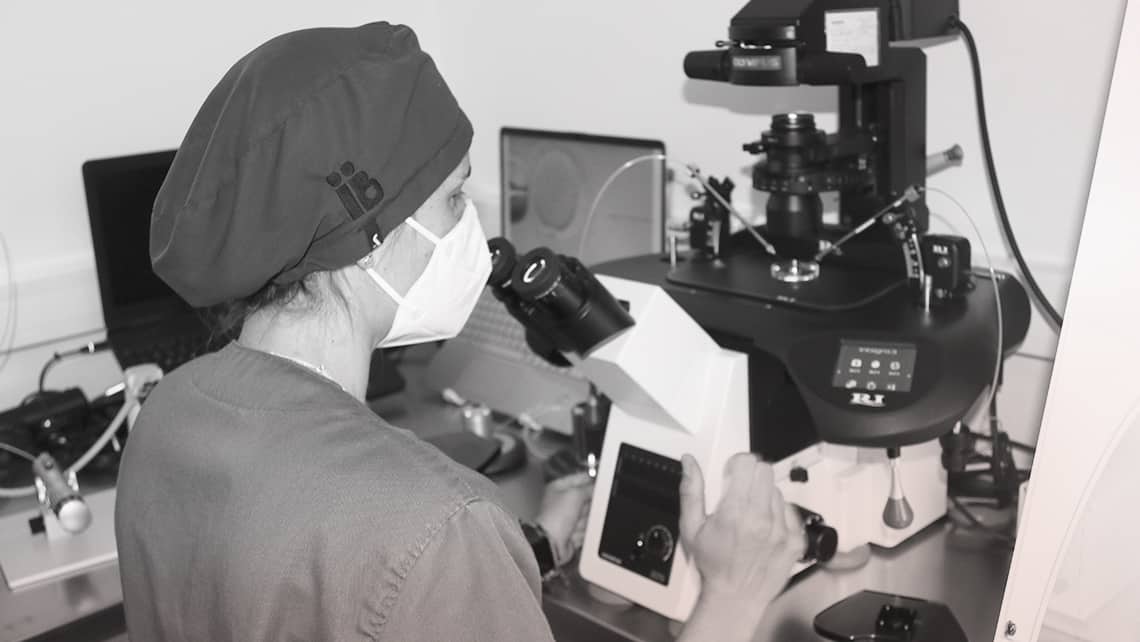
Implantation of aneuploid embryos. Causes and prevention
Humans have 23 pairs of chromosomes (46 in total) in the cells that make up their body tissues. Chromosomes are where genetic material is stored. The chromosome pairs 1 to 22 are known as autosomes and the 23rd pair are the sex chromosomes that determine gender. Having all 23 pairs of chromosomes confers a chromosomal status known as euploid. Consequently, the chromosome formula is set as 46 XX for females and 46 XY for males.
Índice
What are the aneuploidies and the aneuploid embryos?
Aneuploidy is the state in which the two copies of each chromosome do not exist, with more or fewer copies, altering the existing proportion of genetic material in the cells. In most cases, embryos with these chromosomal abnormalities are not compatible with life due to abnormal early development.
Aneuploidy causes.
Most of these chromosomal abnormalities originate in gametogenesis, that is, in the production of the sperm and egg that will fuse to form the embryo. If one of the two gametes involved in the fertilisation process has one or more aneuploidies, the resulting embryo will also be affected by the anomaly. In the case of female gametes, the importance of the maternal age factor in terms of reproductive health has been widely described, with a directly proportional relationship between the probability of generating aneuploid embryos and the mother’s age.
Aneuploid Embryos in Embryo Implantation.
Both in natural conception and after undergoing assisted reproduction treatment (ART), the probability of generating a certain percentage of aneuploid embryos will vary depending on different factors in each specific case. Embryos presenting aneuploidies incompatible with life may either be blocked during the first stages of cell division, or they may be directly incapable of completing the implantation process because their development stops in the first days after generating the blastocyst.
However, it is possible for the aneuploid embryo to implant. In this situation, an early clinical miscarriage is most likely to occur, because the proportion of genetic material present in the embryo would be altered. This is why these aneuploidies represent one of the main factors causing repeated miscarriages.
Are all A quality embryos euploids?
Definitely no. The embryo quality conventional classification, which strictly uses morphological criteria, is not able to discern the embryos chromosomal status and therefore cannot determine whether an embryo is euploid or aneuploid. However, it has been observed that poor quality embryos are more likely to be aneuploid.
How to prevent Aneuploidy?
Aneuploidy cannot be prevented, what we can do is to avoid transferring embryos with aneuploidy. After carrying out an in vitro fertilisation (IVF) treatment, there is the possibility of subjecting the embryos generated to Preimplantational Genetic Diagnosis for Aneuploidy (PGT-A), by means of the biopsy of a few trophectoderm cells in the blastocyst stage. By doing this, we can detect the number of copies of each chromosome present in an embryo. Consequently, those embryos in which no chromosomal abnormalities are detected after the indicated genetic study (euploid) can be transferred to the maternal uterus.
Which aneuploidies are compatible with life?
Although most aneuploid embryos result in early miscarriage in the event of successful implantation, there are certain chromosomal abnormalities that are compatible with life.
Autosomal aneuploidies (pairs 1-22): These include Down Syndrome (Trisomy 21), Patau Syndrome (Trisomy 13) and Edwards Syndrome (Trisomy 18), associated with mental retardation and possible physical malformations. In the specific case of those affected by Down’s syndrome, life expectancy is approximately 50-60 years. Those affected by Patau’s or Edwards’ syndromes die before or shortly after birth and only in exceptional cases do they live beyond the first year of life.
Sexual chromosomes aneuploidies (pair 23):
- Klinefelter’s syndrome (47, XXY): caused by the presence of an extra X chromosome. People affected by this trisomy are usually taller, sometimes slightly mentally retarded and have fertility problems.
- Jakob syndrome (47, XYY): caused by the presence of an extra Y chromosome. Individuals with this syndrome are taller than normal and may have some language deficits, but usually do not have mental retardation.
- Turner syndrome (45, X0): caused by the loss of an X chromosome. People with this monosomy have short stature, infertility and sometimes heart and kidney disorders.
- Triple X syndrome (47, XXX): caused by the presence of an extra X chromosome. May show no symptoms, only mild or more prominent symptoms, including developmental delays and learning disabilities.
Ángel Linares, embryologist at Instituto Bernabeu
